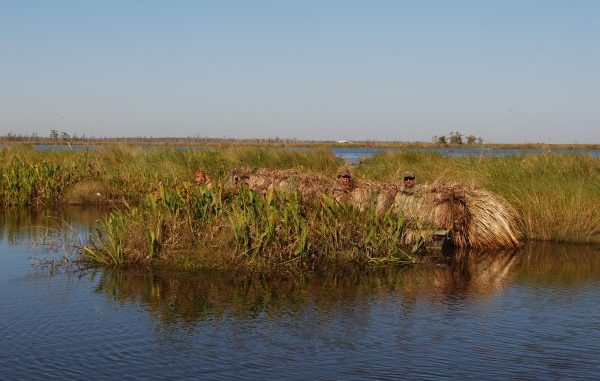
Is a popup blind on a boat the answer for you? When they first made their appearance, lots of hunters wrote them off tersely, with “They don’t work.”
Others experimented, and gradually more and more hunters adopted them.
“There is definitely a learning curve to using a popup blind,” Andy Johnston said. “The mistake that people make is that they assume that because they are hidden, they are concealed.”
He explains that the location of the boat blind is just as important as the location of a permanent blind.
“You wouldn’t build a blind 10 feet out from the bank, would you?” he said. “So don’t park your boat out there to hunt, either. It’s best to set it up across the tip of a grassy point or in a slough.
“The 10 feet of marsh in front of you is made up for by the birds willing to come 30 feet closer to the blind.”
He added that he will set up in the center of large ponds when late-season birds get wary and want to raft up in big water or when tide conditions are so low that only mud flats exist near the banks. The latter condition would destroy a hunter working from a permanent blind.
Junior Mendoza literally bubbles over with enthusiasm for pop-ups on boats.
“You are totally mobile,” Mendoza said. “That’s the thing. If you are hunting in one spot and the birds are falling in another, you can pick up a set of decoys and go over there.”
“Sometimes,” Johnston interrupted, “I will only put out a few of my decoys to start the morning in anticipation of moving.”
Mendoza seemed to have little use for permanent blinds.
“These (pop-ups) don’t take three hunters all day to build,” he said. “You can always set up right with the wind. They are lower in profile than a frame blind.
“And you can forget about waders. I hunt in knee boots or tennis shoes.”
Size is the only issue.
“The only disadvantage is the length of the blind — 18 feet compared to 4 to 6 feet for a permanent blind,” Johnston said.
Johnston takes a couple of extra steps to help with concealment. He always covers his surface-drive motor with a mat of Fastgrass and dresses up the top edge of the popup with small clumps of paille fine (maiden cane) to break its straight outline.


